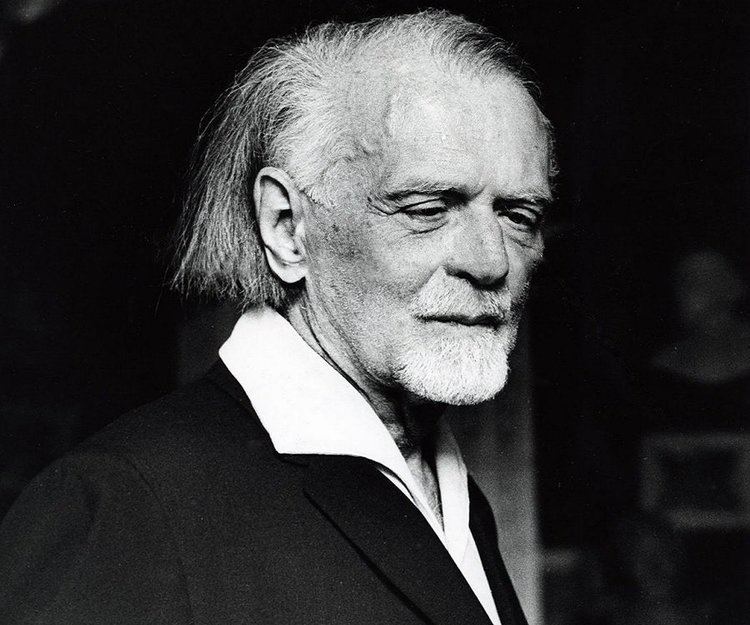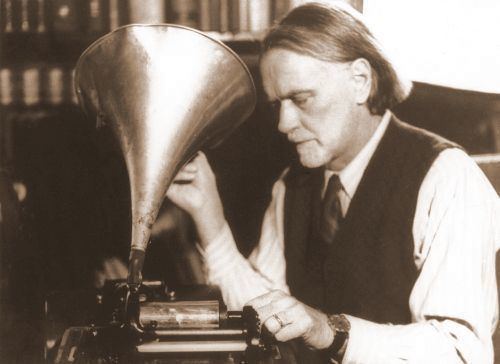Name Zoltan Kodaly | Role Composer | |
 | ||
Spouse Sarolta Peczely (m. 1959–1967), Emma Sandor (m. 1910–1958) Parents Paulina Jalovetzky, Frigyes Kodaly Compositions Hary Janos, Hary Janos, Sonata for Solo Cello, Sonata for Solo Cello, Psalmus Hungaricus, Psalmus Hungaricus, Szekelyfono, Szekelyfono, Dances of Galanta, Dances of Galanta, Evening Song, Evening Song, Te Deum, Te Deum, Punkosdolo, Punkosdolo, Missa Brevis, Missa Brevis, Angyalok es pasztorok, Angyalok es pasztorok, Hungarian Rondo, Hungarian Rondo, Stabat Mater, Stabat Mater, Tancnota, Tancnota, Hegyi ejszakak, Hegyi ejszakak, Three Hungarian Folk Songs, Three Hungarian Folk Songs, Vejnemojnen muzsikal, Vejnemojnen muzsikal, Dances of Marosszek, Dances of Marosszek, Variations on a Hungarian Folksong (The Peacock), Variations on a Hungarian Folksong (The Peacock), Lengyel Laszlo, Lengyel Laszlo, Dal!, Dal!, Ciganysirato, Ciganysirato, Laudes organi, Laudes organi, String Quartet no 2 - op 10: II Andante - quasi recit, String Quartet no 2 - op 10: II Andante - quasi recit, Variations on a Hungarian Folksong (The Peacock): VI Calmato, Variations on a Hungarian Folksong (The Peacock): VI Calmato, Hary Janos Suite: IV The Battle and Defeat of Napoleon, Hary Janos Suite: IV The Battle and Defeat of Napoleon, Magyar nepzene - Volume 4: No 22 A harom asszony (Three women), Magyar nepzene - Volume 4: No 22 A harom asszony (Three women), 8 Kis duett: No 5 Leanyszepseg (Beauty), 8 Kis duett: No 5 Leanyszepseg (Beauty), Magyar nepdalok: No 17 Lattad-e te - babam (Poplar leaves are falling), Magyar nepdalok: No 17 Lattad-e te - babam (Poplar leaves are falling), Magyar nepzene - Volume 9: No 49 Pucine (Mistress Prue), Magyar nepzene - Volume 9: No 49 Pucine (Mistress Prue), Magyar nepzene - Volume 2: No 7 Kitrakotty mese (Cockricoo!), Magyar nepzene - Volume 2: No 7 Kitrakotty mese (Cockricoo!), Variations on a Hungarian Folksong (The Peacock): XII Adagio, Variations on a Hungarian Folksong (The Peacock): XII Adagio, String Quartet no 1 - op 2: II Lento assai - tranquillo, String Quartet no 1 - op 2: II Lento assai - tranquillo, Magyar nepdalok: No 18 Torik mar a reteket (Now the fields are being ploughed), Magyar nepdalok: No 18 Torik mar a reteket (Now the fields are being ploughed), Epigrammak: No 1 Lento, Epigrammak: No 1 Lento, Sonatina for Cello and Piano, Sonatina for Cello and Piano, Serenade for Two Violins and Viola - op 12: III Vivo, Serenade for Two Violins and Viola - op 12: III Vivo, String Quartet no 1 - op 2: IV Allegro, String Quartet no 1 - op 2: IV Allegro, Variations on a Hungarian Folksong (The Peacock): Finale: Vivace, Variations on a Hungarian Folksong (The Peacock): Finale: Vivace, String Quartet no 1 - op 2: III Presto, String Quartet no 1 - op 2: III Presto, Praeludium From Pange Lingua, Praeludium From Pange Lingua, Magyar nepzene - Volume 8: No 45 A bubant keseruseg (Bitterness and sorrow), Magyar nepzene - Volume 8: No 45 A bubant keseruseg (Bitterness and sorrow), Magyar nepzene - Volume 1: No 4 Kit kene elvenni? (Which one should I marry?), Magyar nepzene - Volume 1: No 4 Kit kene elvenni? (Which one should I marry?), Sonata for cello & piano - Op 4, Sonata for cello & piano - Op 4, Cello Sonata - op 4: I Fantasia Adagio di molto, Cello Sonata - op 4: I Fantasia Adagio di molto, 7 Piano Pieces - op 11: No 3 \'\'Il pleut dans mon coeur comme il peut sur la ville\'\', 7 Piano Pieces - op 11: No 3 \'\'Il pleut dans mon coeur comme il peut sur la ville\'\', String Quartet no 1 - op 2: I Andante poco rubato - Allegro, String Quartet no 1 - op 2: I Andante poco rubato - Allegro, Magyar nepzene - Volume 11: No 60 Kis kertet kerteltem (On the shore of the sea), Magyar nepzene - Volume 11: No 60 Kis kertet kerteltem (On the shore of the sea), Magyar nepzene - Volume 5: No 27 Ifjusag - mint solyommadar (A little sad song), Magyar nepzene - Volume 5: No 27 Ifjusag - mint solyommadar (A little sad song), Intermezzo for String Trio, Intermezzo for String Trio, Magyar nepzene - Volume 3: No 12 Kocsi - szeker (Wheelcart - barrow), Magyar nepzene - Volume 3: No 12 Kocsi - szeker (Wheelcart - barrow), Missa brevis: IIIGloria, Missa brevis: IIIGloria Similar People Bela Bartok, Emma Sandor, Antonin Dvorak, Erno Dohnanyi, Janos Starker | ||
Zolt n kod ly sonata for solo cello
Zoltán Kodály (/ˈkoʊdaɪ/; Hungarian: Kodály Zoltán, [ˈkodaːj ˈzoltaːn]; 16 December 1882 – 6 March 1967) was a Hungarian composer, ethnomusicologist, pedagogue, linguist, and philosopher. He is well known internationally as the creator of the Kodály Method.
Contents
- Zolt n kod ly sonata for solo cello
- How History Influences Music Zoltan Kodaly
- Life
- Kodly method of musical education
- Selected works
- References

How History Influences Music - Zoltan Kodaly
Life
Born in Kecskemét, Hungary, Kodály learned to play the violin as a child.

In 1905 he visited remote villages to collect songs, recording them on phonograph cylinders. In 1906 he wrote a thesis on Hungarian folk song, "Strophic Construction in Hungarian Folksong". At around this time Kodály met fellow composer and compatriot Béla Bartók, whom he took under his wing and introduced to some of the methods involved in folk song collecting. The two became lifelong friends and champions of each other's music.

All these works show great originality of form and content, a very interesting blend of highly sophisticated mastery of the western European style of music, including classical, late-romantic, impressionistic and modernist traditions, and on the other hand a profound knowledge and respect for the folk music of Hungary and the Hungarian-inhabited areas of Slovakia and Romania. Partly because of the Great War and subsequent major geopolitical changes in the region, and partly because of a naturally rather diffident temperament in youth, Kodály had no major public success until 1923. This was the year when one of his best-known pieces, Psalmus Hungaricus, was given its first performance at a concert to celebrate the fiftieth anniversary of the union of Buda and Pest (Bartók's Dance Suite premiered on the same occasion.)

Kodály's first wife was Emma Gruber (née Schlesinger, later Sándor), the dedicatee of Ernő Dohnányi's Waltz for piano with four hands, Op. 3, and Variations and Fugue on a theme by E.G., Op. 4 (1897). In November 1958, after 48 years of the most harmonious marriage Kodály's first wife Emma died. In December 1959, Kodály married Sarolta Péczely, his 19-year-old student at the Franz Liszt Academy of Music with whom he lived happily until his death in 1967 at the age of 84 in Budapest.

In 1966, Kodály toured the United States and gave a special lecture at Stanford University, where some of his music was performed in his presence.
Kodály method of musical education

Throughout his adult life, Kodály was very interested in the problems of many types of music education, and he wrote a large amount of material on teaching methods as well as composing plenty of music intended for children's use. Beginning in 1935, along with his colleague Jenö Ádám (14 years his junior), he embarked on a long-term project to reform music teaching in Hungary's lower and middle schools. His work resulted in the publication of several highly influential books.

The Hungarian music education program that developed in the 1940s became the basis for what is called the "Kodály Method". While Kodály himself did not write down a comprehensive method, he did establish a set of principles to follow in music education, and these principles were widely taken up by pedagogues (above all in Hungary, but also in many other countries) after World War II. See also: Kodály Hand Signs.
In the motion picture Close Encounters of the Third Kind, a visual learning aid distributed to members of a conference of ufologists was named the "Kodály Method" and referenced musical notes as hand signals.
